Share the post "Soccer Rules for Kids (Parents + Players Guide)"
We want people to enjoy soccer, but with many rules, it can be confusing. Teach kids the basics with a useful list, so they can enjoy the game.
What’s a foul? When do we have a corner kick? Just a couple of the many questions kids have when they’re starting out.
I’ll take you through the basics and on to more advanced rules in a soccer game, which is easy for kids to understand and for someone to tell them.
Once you’re finished reading this article, you must read our A-Z Soccer Rules. It’s a great list of terms and rules that everyone must know.
- Soccer Rules for Kids
- What Are the Basic Rules of Playing Soccer for Kids?
- Soccer Positions for Kids
- How A Soccer Starts and What Happens Before Kick Off
- What Happens when The Ball Goes out Of Play?
- What Does the Referee Do?
- When is a Goal Scored in Soccer?
- What's a Throw-In?
- What're the Rules for A Corner Kick in Soccer?
- What's a Goal Kick?
- What's a Free Kick?
- What's a Penalty Kick?
- What Are Substitutions?
- What Are the Basics of Offside?
- Why Do Players Get Yellow Cards?
- Why Do Soccer Players Get Red Cards?
- Related Questions
- What's the Field Sizes for Youth Teams and Adults?
Soccer Rules for Kids
- When the whistle is blown, the game is stopped or started.
- Yellow cards are a warning, for an offense.
- The red card means the player is sent off, for committing a serious foul.
- Corners are given when the ball goes behind the goal.
- Throw-ins are given when the ball goes out of play on the sideline.
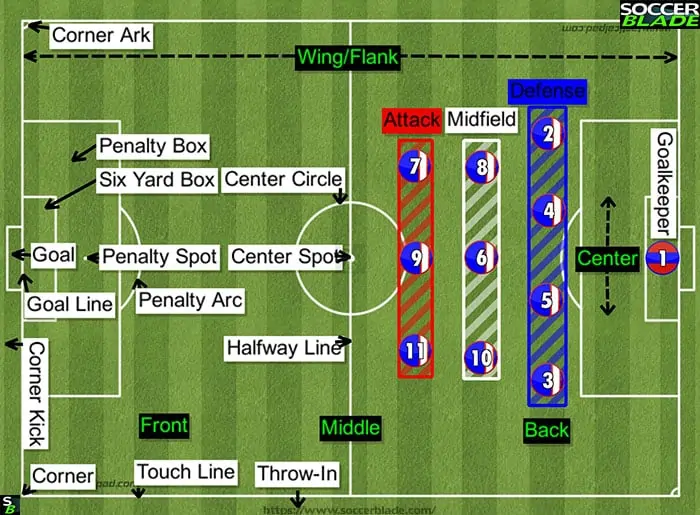
What Are the Basic Rules of Playing Soccer for Kids?
- The match is 90 minutes for adults
- 45 minutes for the first half
- 15 minutes for a break
- 45 minutes for the second half
- Extra time is added by the referee for each half, because of stoppages
The length of a match varies, depending on how old you’re. The younger you’re, the match is shorter, plus there are fewer players on the field.
How many players are there on the field and what do they do?
Let’s look at the adults as an example.
- 11 players per side
- 1 referee on the field
- 2 assistant referees at either side of the field
What are the roles of each of the players?
We’ll use the standard 4-4-2 formation in this example, to give an idea of what they do.
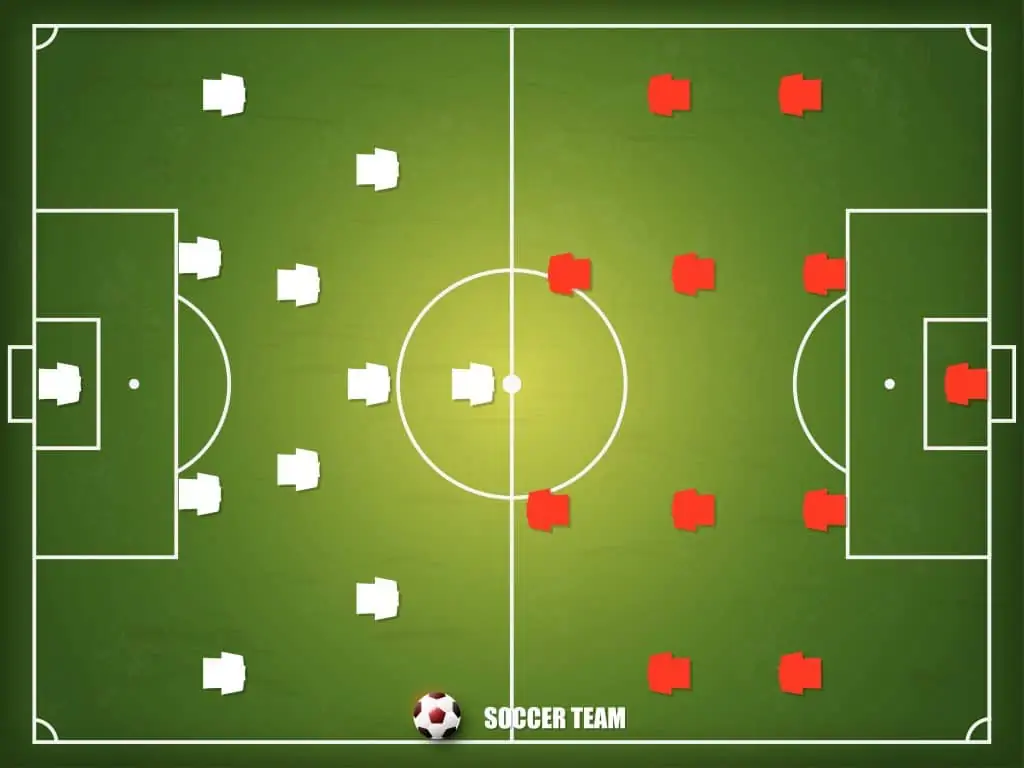
Soccer Positions for Kids
- Goalkeeper – stops the shots at goal – can use his hands in their penalty box
- Fullback – Defender on the right side of the field
- Fullback – Defender on the left side of the field
- Center Back – Defender in the center to one side of the penalty box
- Center Back – Defender in the center to one side of the penalty box
- Center Midfield – Protect the center backs from an attack + start attacks
- Right Midfield – Play in front of the right fullback – defend + attack on the wing
- Center Midfield – Partner with N.6 and defend and attack
- Striker – Play in and around the opponent’s penalty box – aim to score and assist
- Striker – Partner with N.9 and attack and create chances together
- Left Midfield – Like N.7 but on the left side
These positions are as a guide, so they will vary from team to team.
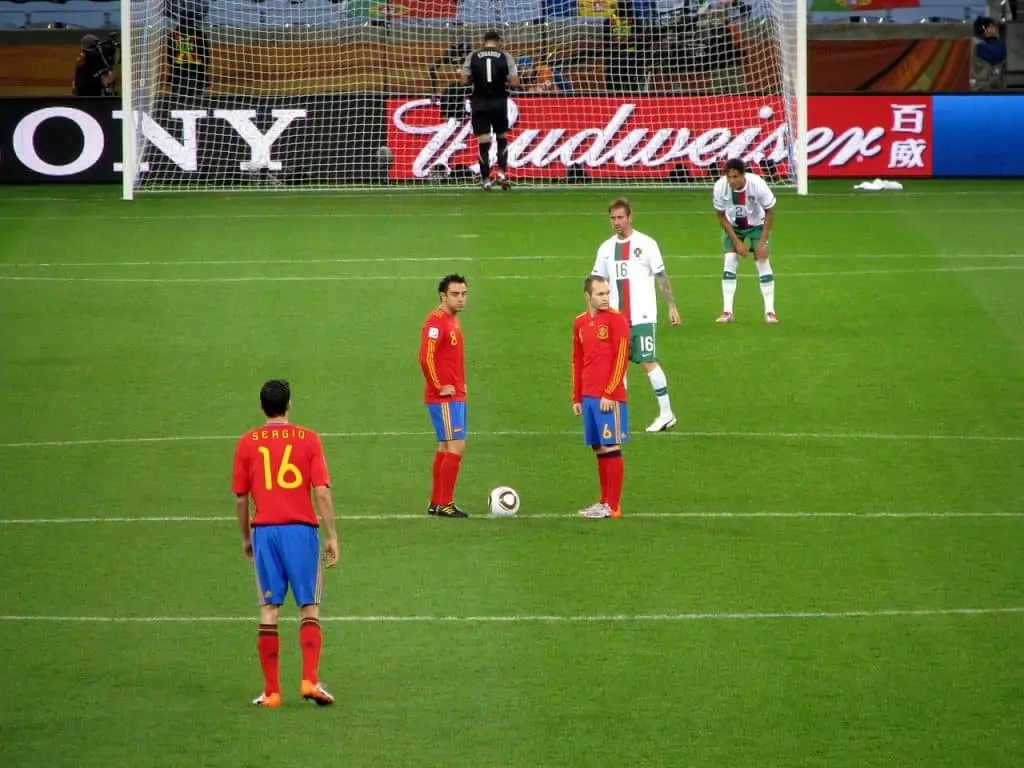
How A Soccer Starts and What Happens Before Kick Off
Before the game, a coin is tossed to see which way each team attacks for the first half. The teams will swap ends after the halftime break. Both teams will be in their own half – whoever won the coin toss, will kick off first.
The ball is placed in the center of the field and the player will kick it back to one of their teammates. The aim of the game is to score more than the opponent.
If the scores are equal after the final whistle, the game is a tie/draw. In a normal league match, each team will get a point for a tie/draw.
If the game is a cup match, the teams may need to play on to decide the winner – either with extra time and penalties or just penalties.
What Happens when The Ball Goes out Of Play?
The ball is in play when the soccer ball is within the field. So in the rectangle, marked outlines. If the ball goes over the boundary line, a team will be awarded a throw-in or a corner kick.
At any time the referee can stop the game with their whistle, for a foul for another offense.
What Does the Referee Do?
The decision of the referee is final if a player is showing disrespect, the player can be shown a yellow card. When the whistle is blown by the referee, the game is stopped.
The referee will point to the direction of the reason and then towards the attacking end, for the team the decision has been made.
The referee will blow the whistle for the match to be continued.
When is a Goal Scored in Soccer?
A goal is given when the ball crosses over the line, inside the goalposts. All of the balls need to be over the line for it to be counted.
If any foul is committed during the build-up, the referee can call back the play and decline the goal. Restarting the game after a goal is the same as a kick-off when the game is first started.
All the players go into their own half and the team which conceded the goal will take the restart from the center circle.
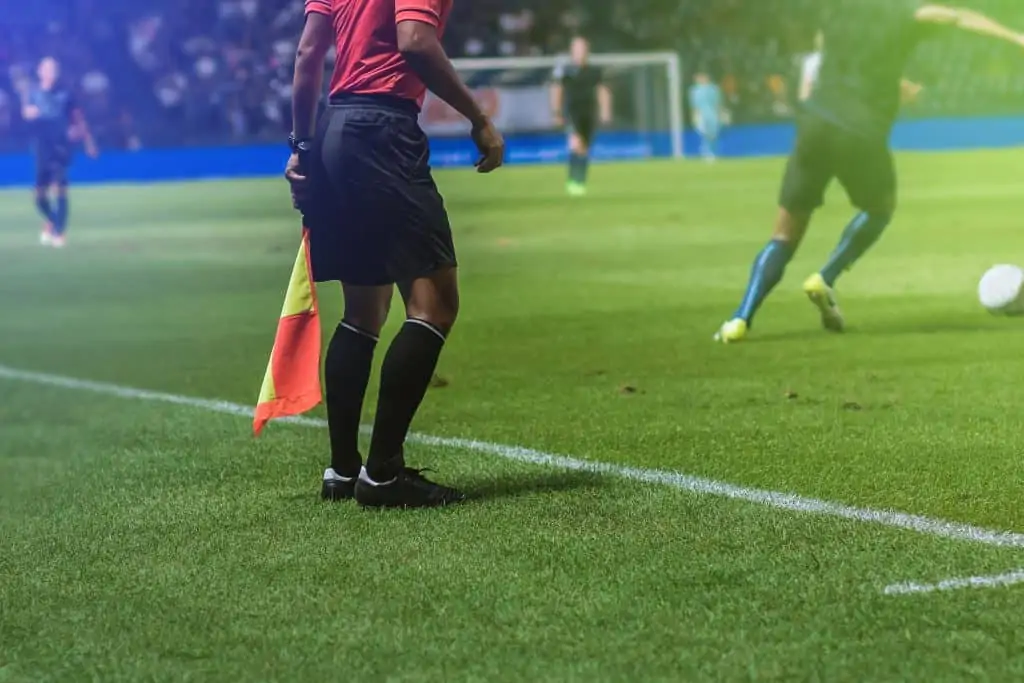
What’s a Throw-In?
Along the long side of the field is where a throw-in is taken. This will mainly involve the fullbacks and wingers.
When the ball goes over the line, whichever team caused the ball to go out, it’ll be awarded against and the opponents take a throw-in.
How to Take a Throw-in?
From the position of where the ball went out, normally a fullback will take the throw-in.
The ball is thrown with two hands from behind the head – the ball must be released when the ball is over the player’s head.
The player taking the throw must stand off the field until the ball is back in play.
What’re the Rules for A Corner Kick in Soccer?
If the ball goes over the line behind the goals, a corner is awarded to the opponent. This is only given when a team kicks it out behind the back of their own goal.
If the ball is kicked out when you shoot at your opponent’s goal, the other team is awarded a goal kick.
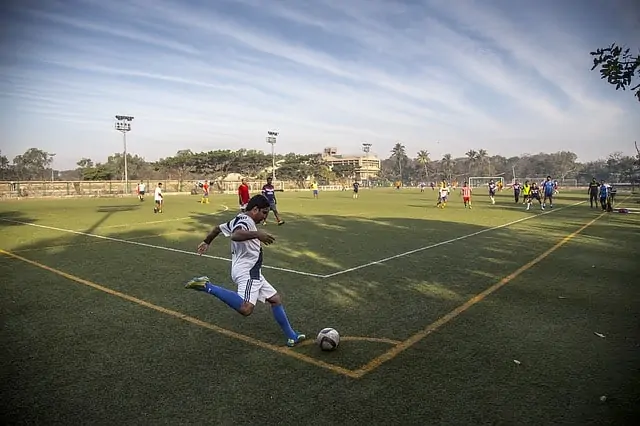
How to Take a Corner?
The ball is placed in corner of the field, to the side of the goal to which the ball went out. If it went over the goal, the referee will say which side the corner should be taken from.
Opponents must stand 10 yards away from the corner till the kick is taken.
What’s a Goal Kick?
When the attacking team kicks the ball behind the goal, a goal kick is awarded. The goalkeeper normally takes the kick, but another player can take it also.
How to Take a Goal Kick?
The ball is placed on the corner of the 6-yard box which is around the goal. When the referee is ready, the kick is taken and the ball is back in play.
The opponents must stay out of the penalty box until the kick is taken.
What’s a Free Kick?
A free kick can be awarded for a foul on an opponent. The reason for a foul could be;
- Bad tackle
- Pulling a player’s shirt
- Obstructing an opponent
- Offside
The referee will blow the whistle for the foul play and instruct the teams on the decision. When the kick is being taken, the opponents need to stand 10 yards away from the ball.
How to Take a Free-Kick?
With the wall of players standing 10 yards away, you can either chip the ball over the wall or hit it to one side of the wall where you can see the goal.
Chipping the ball is the best option, but this takes some skill and you don’t want to waste a shot.
So for beginners, it’s best to strike the ball as hard as you can towards the goal, which gives you a chance of the keeper making a mistake or for the chance of a rebound.
What’s a Penalty Kick?
A penalty kick is awarded when a foul is made inside the penalty box. The referee will blow the whistle and will point to the spot.
An attacking player will take the penalty and all of the players except the opposition goalkeeper will remain in the box.
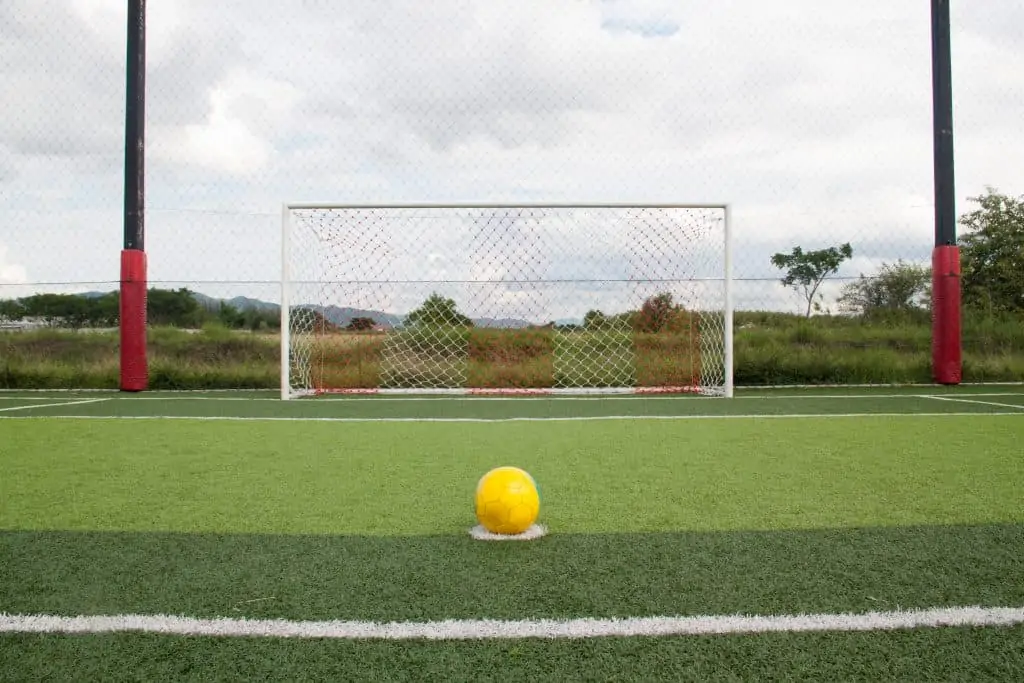
How to Take a Penalty?
The goalkeeper needs to stay on the line of the goal, if not the referee could ask for the penalty to be taken again.
With all the other players outside of the box, the referee will signal with the whistle to take the kick.
The striker will normally aim for the corner and the keeper will try to guess which way the shot is being taken. First is accuracy, then add power as you develop your technique.
What Are Substitutions?
Changes to the players can be made during the game. The ball needs to be out of play for this to happen and the referee will signal to the sideline. For the adults, there are;
- 7 substitutes on the bench
- 3 changes can be made during a game.
- The players that are taken off, can’t enter the field to play again in that match.
For youth soccer, the laws are looser and players that are substituted can play again. The number of substitutes will vary for each team, generally, only 3 substitutes are needed.
Your local league will have its own rules.
What Are the Basics of Offside?
This rule applies to the older age groups of players, currently from the age of 10 and up in the U.S.A – check your local rules.
An offside is awarded when an attacking player is standing behind the last defender (towards the keeper) when the ball is played behind that last defender.
For an attacker, you must say in line with the last defender, until the ball is played through, then they can run past the defender.
A free kick is awarded to the defending team when there’s an offside. The freekick is taken from the position where the attacking player was offside.
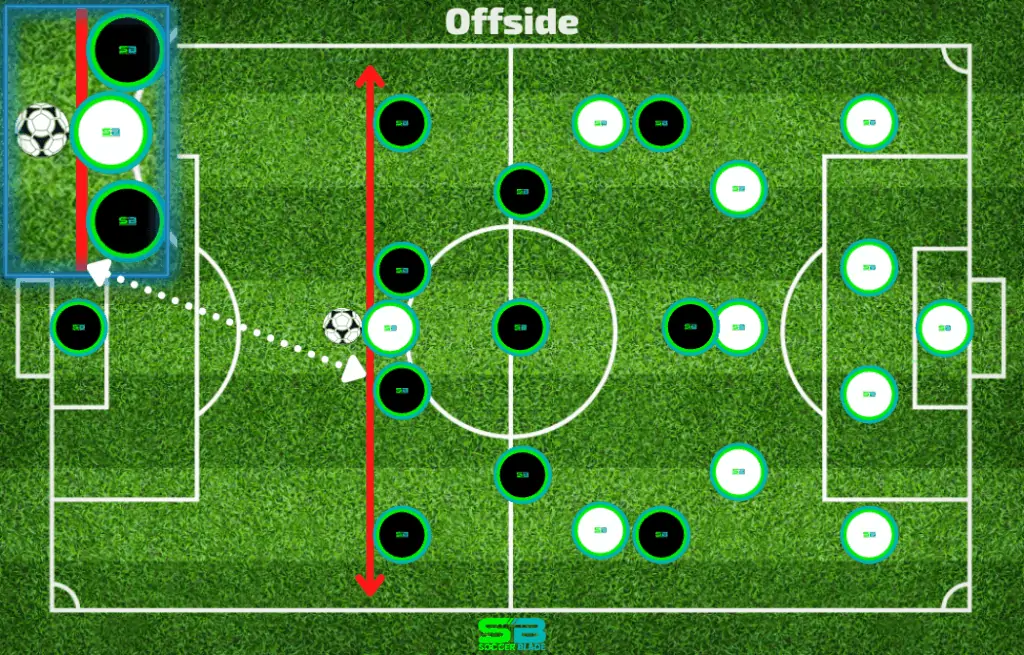
Why Do Players Get Yellow Cards?
A yellow card is given caution to a player. It can be given for one of the following reasons.
- A number of tackles resulting in a foul
- A bad tackle – where a player kicks an opponent before connecting with the ball
- Stopping a break – when a foul is made and a team has a chance to attack the goal
- Shirt pulling – touching is okay but don’t grab
- Disrespect to the referee or opponent – shouting or bad language – unsporting behavior
- Tackles around the box – This can halt the opponent
- Fouls causing a penalty – a bad tackle or foul in your box
- Handball – when the offense is deliberate
- Celebrating with fans – players should not be in contact with fans
- Taking off a shirt – players face this normally after scoring as a celebration
- Showing a yellow card – imitating a referee to show a card to an opponent
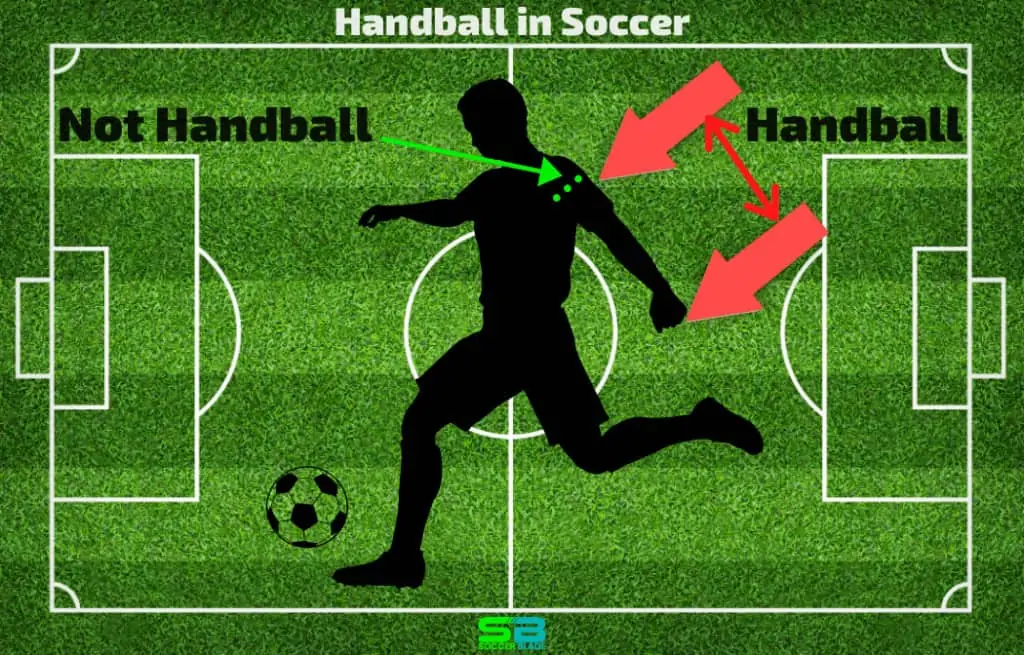
For the younger players, the referee will take into account if a mistimed tackle is made on an opponent – due to inexperience.
Normally for the younger players, the referee is more lenient.
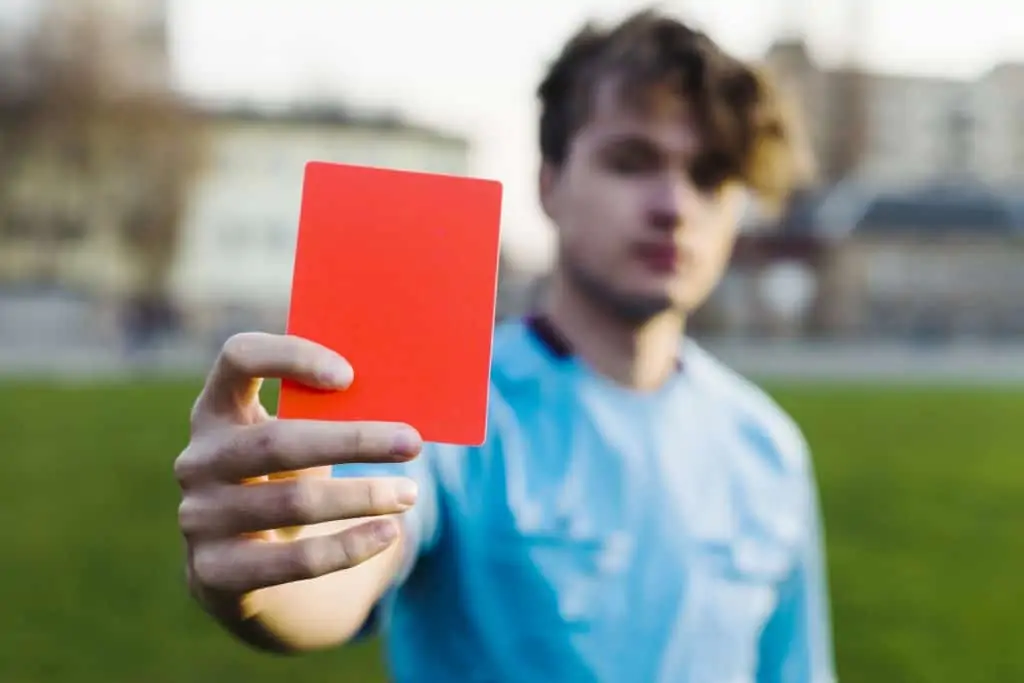
Why Do Soccer Players Get Red Cards?
A red card shown to a player means the player has to leave the field of play. They will not take part in the rest of the match (there’s no sin-bin). Some of the main offenses for a red card being shown are;
- Dangerous tackle – too strong a tackle where a player in danger
- Two yellow cards – If a player is shown two yellow cards it results in a red card being shown
- Disrespect – If a referee deems a player to have used abusive language
- Two footed tackle – A player lunges into an opponent with studs hitting the player
- Tackle from behind – this could result in an injury
- Violence – Aggressive play such a striking someone, especially near the face
- Telling the referee – if a player tells a referee what decision they should make
- High foot – endangering another player
- Spitting – if this is done at or towards a person
You must now check out our 48 rules of soccer in an easy-to-follow A to Z format. After reading this, you will know more than most! Enjoy 🙂
Related Questions
How long is a soccer match for each age? Sports Rec;
- Under 6: 10 minutes per half – 10-minute break
- Under 8: 20 minutes per half – 5 to 10-minute break
- Under 10: 25 minutes per half – 5 to 10-minute break
- Under 12: 30 minutes per half – 5 to 10-minute break
- Under 14: 35 minutes per half – 5 to 10-minute break
- Under 16: 40 minutes per half – 15-minute break
- Above 16: 45 minutes per half – 15-minute break
What’s the Field Sizes for Youth Teams and Adults?
| Age Group | Field Size – Yards |
|---|---|
| Adults | 65 – 70 x 109 to 114 |
| Under 14 | 60 x 100 |
| Under 12 | 50 x 80 |
| Under 10 | 40 x 70 |
| Under 8 | 25 x 50 |
| Under 6 | 15 x 30 |
When is the soccer season?
Professionals – MLS: From March to October – winter break.
What are the soccer positions for kids?
Defenders, midfielders, and attackers. Teams will have more defenders. Each team varies depending on the formation.
Share the post "Soccer Rules for Kids (Parents + Players Guide)"
Joel is a seasoned soccer journalist and analyst with many years of experience in the field. Joel specializes in game analysis, player profiles, transfer news, and has a keen eye for the tactical nuances of the game. He played at various levels in the game and coached teams - he is happy to share his insight with you.



